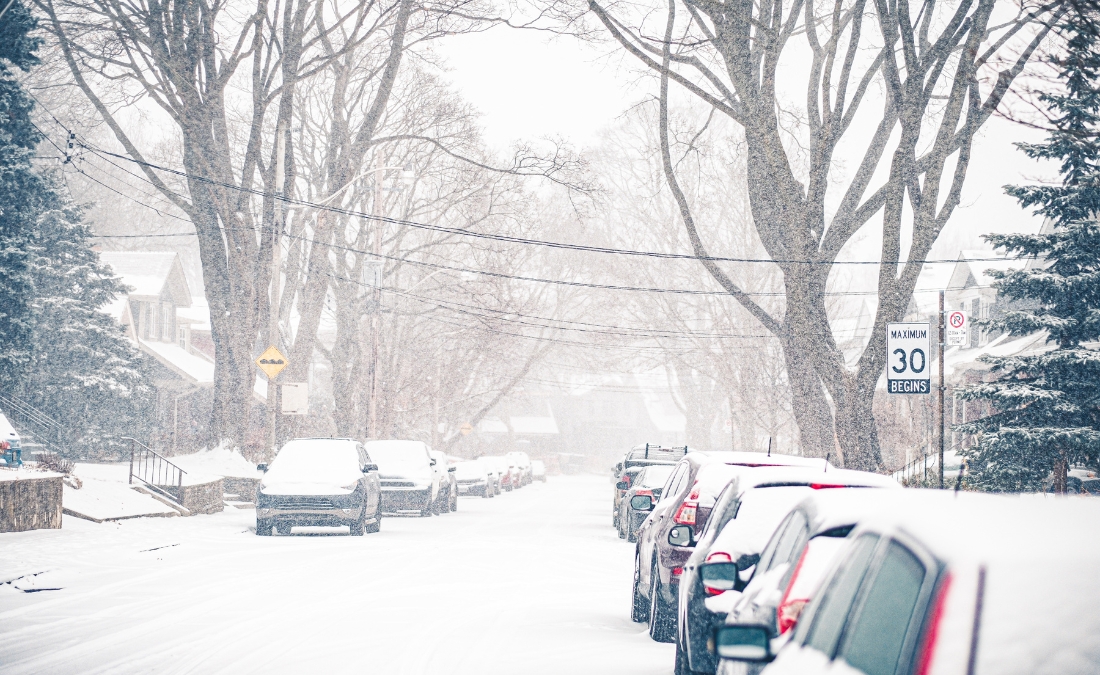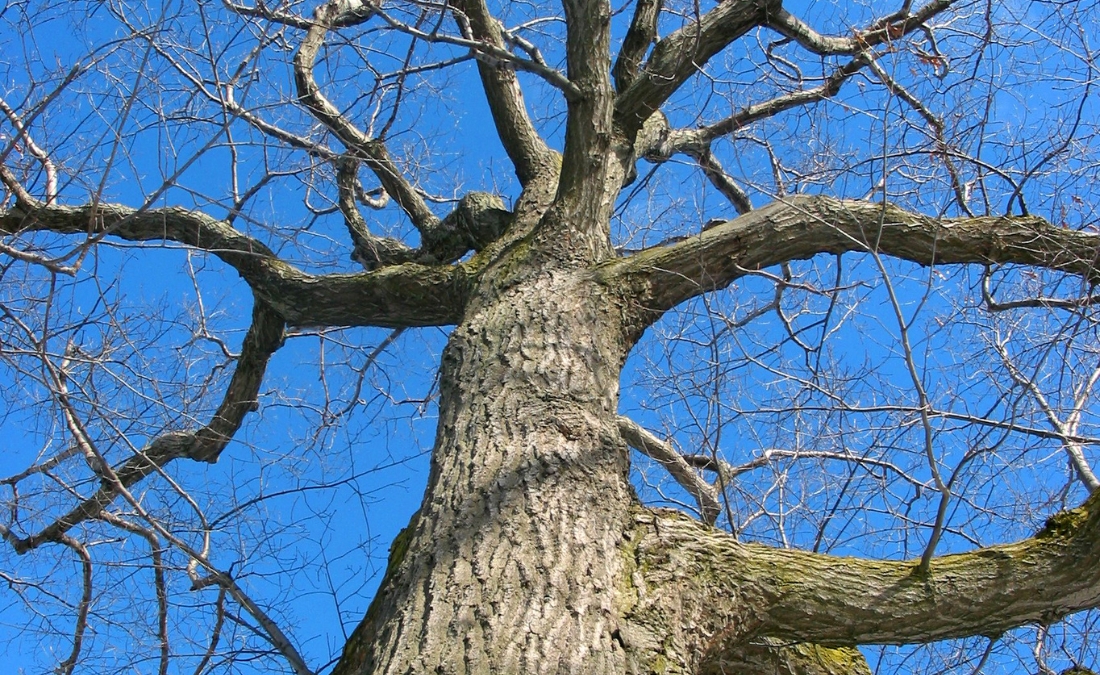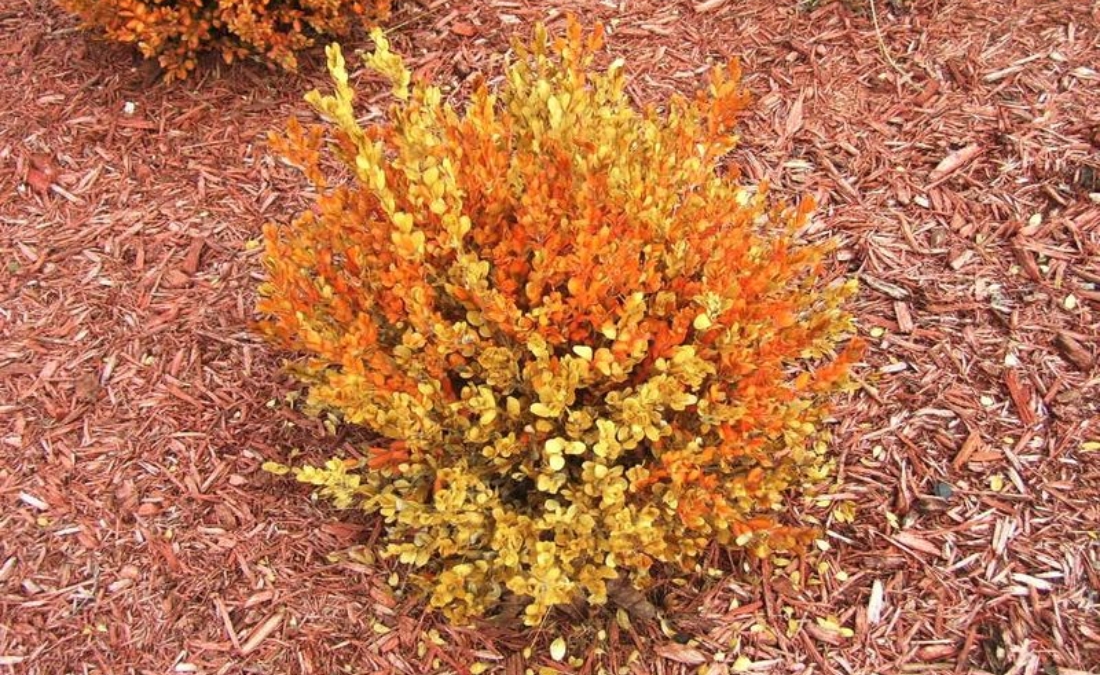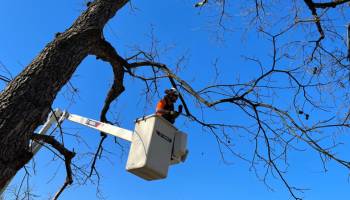How to Identify and Treat for Dutch Elm Disease in the Midwest

Don't lose all your elm trees to Dutch elm disease! Discover how to identify symptoms early and what you can do to keep it from spreading across the Midwest.
Is something off with your tree? If the leaves are turning yellow or brown long before fall, it could be more than just stress – it may be Dutch elm disease. This fast-moving, fatal infection has claimed millions of elms across the U.S. While there’s no cure, catching it early gives you a chance to slow the spread and protect the healthy elm trees on your property. Here’s what you can watch for – and what to do next.
Key Takeaways:
- Dutch elm disease is a deadly fungal infection spread by bark beetles and root grafting that has killed millions of North American elm trees since its arrival in the 1920s.
- Early symptoms include leaf flagging (yellowing and curling), followed by browning, early leaf drop, and downward-curving “shepherd’s crooks” on branch tips.
- Although there’s no definitive cure, early detection and treatment options, like pruning infected branches, severing root grafts, and injecting fungicide, can help control the spread.
- Preventative measures include promptly removing dead elms, planting resistant elm cultivars at least 50 feet apart, and properly disposing of infected wood through chipping or burning.
The Value of Elms in Your Yard and Community
Towering up to 80 feet tall, you can find elm trees (genus Ulmus) throughout the Northern Hemisphere. Historically, they were one of the most popular shade trees planted in many U.S. cities in the late 1800s and early 1900s. Their use dates back many centuries, as Native Americans commonly used elm tree wood as signposts for tribal gatherings.
Elm trees leaf out earlier in spring than many other deciduous trees, making them a valuable food source for insects and songbirds. Bees visit their flowers, and they are the sole food supply for the caterpillars of many different moths and butterflies.
In the 1930s, just as the elm tree had become a popular plant in America’s cities, scientists discovered Dutch elm disease (DED) in Cleveland, Ohio. Since its arrival, this fungus has remained one of the most destructive shade tree diseases in the U.S.
Because elm trees remain popular shade trees across the Central Plains states like Texas, Oklahoma, Kansas, Missouri, and Iowa, it is essential to understand DED, recognize its symptoms, and know how to protect your trees from it.
PRO TIP: Many municipalities have strict regulations about elms due to the danger of DED. Some local governments may enforce pruning or removal moratoriums between certain dates when the beetles are most active. If you plan to do any work on your elm, check with your urban forestry or planning department to ensure you’re staying compliant with local regulations.
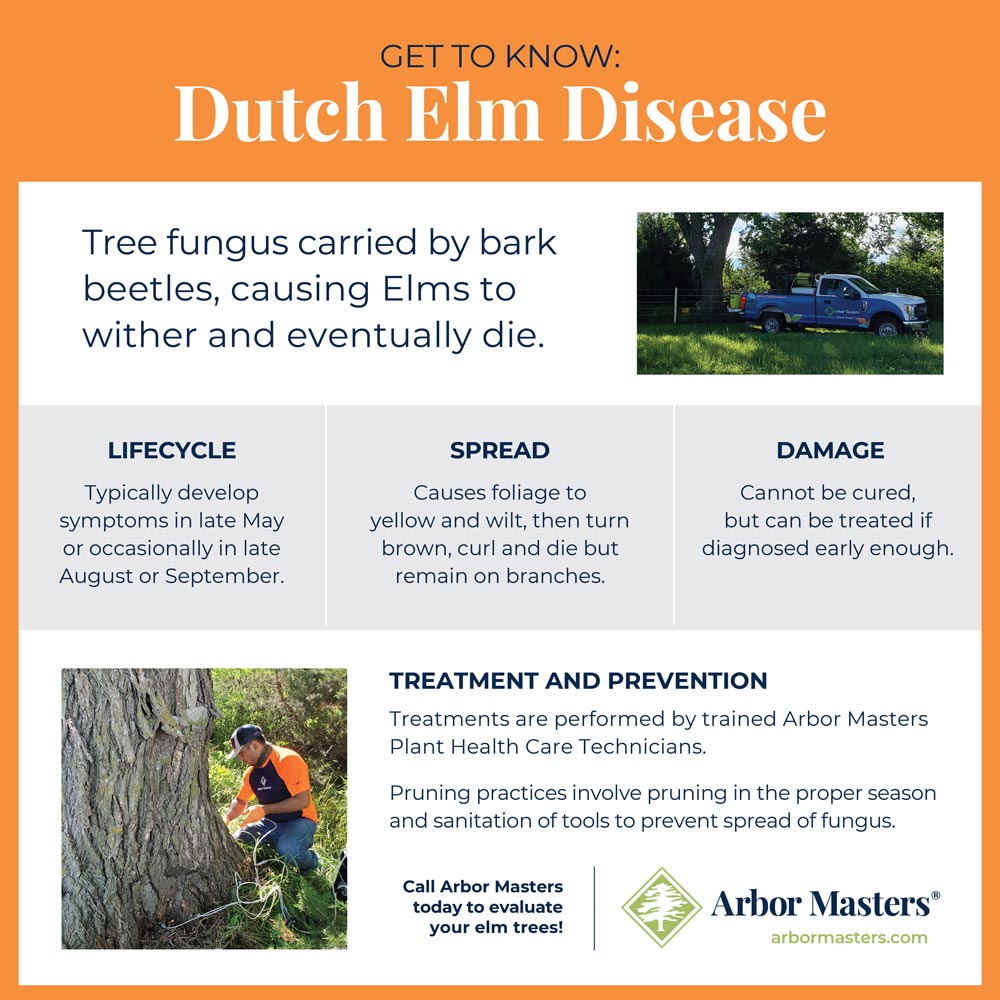
What Is Dutch Elm Disease?
Dutch elm disease (DED) is a deadly fungal infection that affects all types of native elm trees, and in rare cases, Zelkova trees, too. It gets its name from Dutch scientists who first identified and described the disease in the 1910s, when it began killing large numbers of elms across Europe.
By the 1940s, DED had wiped out around 40% of Europe’s elm trees. Then, in the 1960s, a second, more aggressive strain of the fungus triggered a new wave of devastation across the continent.
The disease reached North America in the late 1920s through imported European timber. By 1980, it had killed at least 77 million American elms. And although we’ve learned how to manage its spread, Dutch elm disease is still a threat wherever elm trees are found.
Most elm species native to North America are vulnerable to DED, but there are a few disease-resistant cultivars. Siberian and Chinese elms, for example, tend to hold up better against the fungus.
What Causes Dutch Elm Disease?
If you want to fully understand the disease, you need to know what causes it and how it spreads. There are several factors that spread DED from one tree to another.
Ophiostoma Fungi
The fungus Ophiostoma Ulmi or O. Novo-Ulmi causes Dutch elm disease. The fungus infects the bark and tissue of the trees. As elm trees produce springwood in the springtime, the thin-walled xylem vessels in the tissue become the ideal habitat for the fungal disease to spread. The infection blocks water transport, leading to wilting and eventual death.
So how does the Ophiostoma fungi end up in elm trees? The two typical ways are transmission through bark beetles and transmission through root grafting.
Bark Beetles
Two species of bark beetles are responsible for spreading this disease. The native elm bark beetle, but more commonly, the European elm bark beetle. European bark beetles arrived in North America in the early 1900s. The beetles are stout, reddish-brown, and measure about 1/8 inch long.
European elm bark beetles overwinter as larvae in the wood of recently killed elm trees. In April, adults emerge, feeding primarily on the small branches high in the tree canopy. This is the entry point of fungus vectored by the beetle.
This generation will then seek out dead elm trees for its egg-laying. The second generation of beetles emerges in July, repeating the cycle with a third generation emerging in September. These beetles and/or the eggs they lay will then overwinter in dead elm wood.
PRO TIP: The fungus kills the tree rather than feeding larvae, which only occurs on dead trees. This is distinct from another well-known borer, the emerald ash borer, which lays eggs in living tissue, eaten by the larvae, eventually killing a live ash tree if left untreated.
Root Grafting
Root grafting happens when the roots of two nearby trees grow together and form a natural connection. This can occur between trees of the same species or even different ones. When roots are grafted, the trees can share water, nutrients, and even help support each other against strong winds.
But there’s a downside—these shared root systems can also spread diseases. If one tree becomes infected with Dutch elm disease (DED), the fungus can move quickly through the root graft into the neighboring tree. This type of transmission often causes a much faster decline, starting from the roots and trunk, instead of from the top down as it would with beetle-spread infections.
Root grafts are especially a concern when elm trees are growing within 35 to 50 feet of each other.
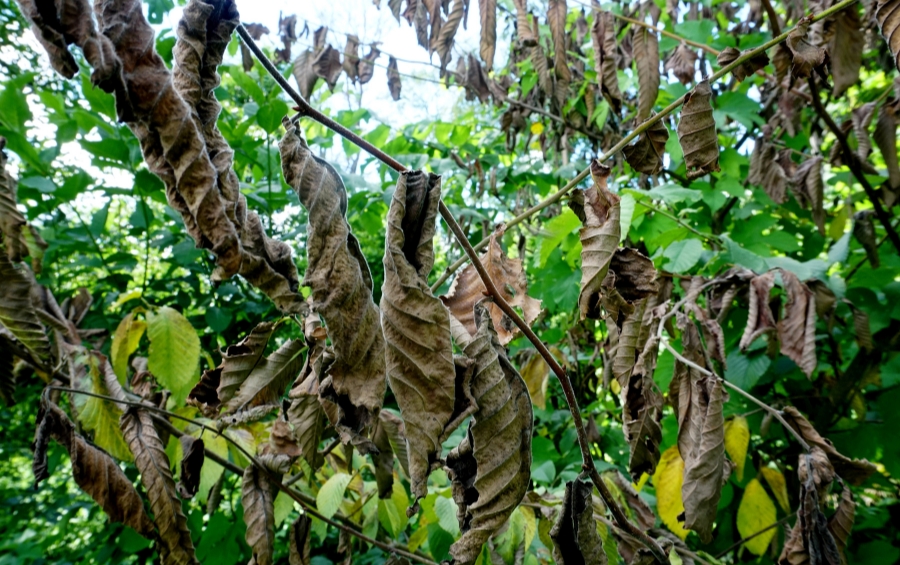
Flagging leaves like these may be a sign your tree has Dutch elm disease.
Symptoms of Dutch Elm Disease
As DED advances, you’ll want to look at the tree’s leaves for symptoms. Some of the common symptoms of DED include:
Flagging Leaves
The earliest symptom of Dutch elm disease is leaf flagging. Flagging is when elm tree leaves begin to turn to a yellow-brown color and curl into themselves. This discoloration results from the fungus blocking the tree’s vascular system, preventing water and nutrients from reaching the leaves to produce chlorophyll.
Flagging begins in spring or summer at the ends of elm tree branches. In younger or more vulnerable trees, flagging will lead to leaf drop more quickly than in more mature elm trees.
Leaf Browning and Early Leaf Drop
As the disease progresses, yellow leaves will turn dark brown, become brittle, and eventually fall from the tree. As leaves from exterior branches die, the disease will develop inward along the tree’s branches.
If left untreated at this stage, Dutch elm disease can kill elm trees after just a few months, although some may survive for a year or longer.
Twigs Turn Down to Form “Shepherd’s Crooks”
As the disease spreads and kills branches, dead branch tips bend downwards, creating “shepherd’s crooks” due to tissue wilting. Researchers have observed discoloration and vascular streaking under the bark of dead branches because of the fungus in the tree’s vascular system. In a cross-section of a branch or twig, there will be a broken or continuous ring in the outer rings of the wood if the disease infected the tree during the current growing season.
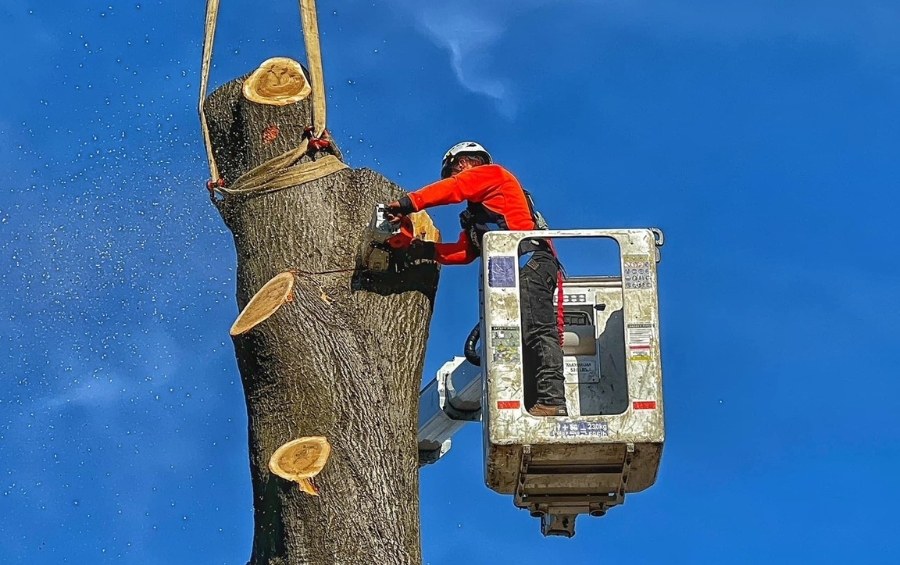
Sometimes, there is nothing you can do for your elm trees but remove them once they have a Dutch elm disease infection.
How to Treat Dutch Elm Disease
There is no definitive cure for DED; however, if caught early enough, preventative treatments can be effective in combatting it.
Research and plant breeding have resulted in resistant American elm and hybrid elm species. Introducing them throughout the country will help to weed out the disease.
But how can you protect the elm trees you already have? There are a few critical things to do, such as:
- Remove Dead Elms: A dead elm tree isn’t something to leave standing in your yard, and you should have a professional remove it as soon as possible. These dead trees harbor bark beetles that can spread the fungus to other elms.
- Prune Infected Branches: If you notice symptoms of DED, have an arborist inspect your tree and prune the infected branches. Cutting away infected branches can protect the rest of the tree from further infection
- Sever Root Grafts: A vibratory plow can sever root grafts to lower the risk of an infected elm passing the disease to another specimen.
- Replace Lost Elms with Resistant Cultivars: If you’ve had to remove an elm or you just want to plant one on your property, consider a disease-resistant cultivar. Not only will the tree be resistant to DED, but it won’t be at risk of spreading the disease to other elms on your property through root grafts. For extra protection, plant any new elms at least 50 feet from other elms.
- Inject Trees with Fungicides: An arborist can perform trunk injections every 1-3 years to protect trees from infections due to beetle feeding. Fungicides cannot help with root grafts, however, so you must use them in conjunction with other methods to protect your trees.
Frequently Asked Questions About Dutch Elm Disease
To help you better understand DED and our ecosystem, we’ve answered some common questions about it that we get from homeowners.
What trees can I replace elms with in the Midwest?
If you had to remove an elm due to DED, you could replace it with several options, including:
- Disease-resistant elm cultivars
- Bur oaks
- Hackberries
- Shagbark hickories
- Bald cypresses
- American lindens
How do you dispose of diseased elm trees?
Some ways you can dispose of your elm trees that have DED include the following:
- Chipping
- Burning
- Covering the logs with plastic
Never transport diseased wood outside of your immediate area, as you could spread DED to other elms.
Is Dutch elm disease the only common tree disease I should be concerned about?
DED isn’t the only threat your trees face in the Midwest and Great Plains regions. Some other common diseases include:
- Anthracnose
- Powdery mildew
- Thousand Cankers Disease
- Oak wilt
- Pine wilt
Arbor Masters Is Here to Help You Fight Dutch Elm Disease
Dutch elm disease is an extremely dangerous fungal infection plaguing North America and Europe. With decades of destruction spread by bark beetles and through root grafting in elm trees, it is more important than ever to understand and identify the early signs. When you spot them, it’s time to give the team at Arbor Masters a call for help.
We employ ISA Certified Arborists who keep up to date with the latest research on DED and methods to control it. We can examine your trees, make recommendations for what to do for your trees, and execute the plan for you. Call us today at 913-441-8888 or request a quote online for help with your elms.
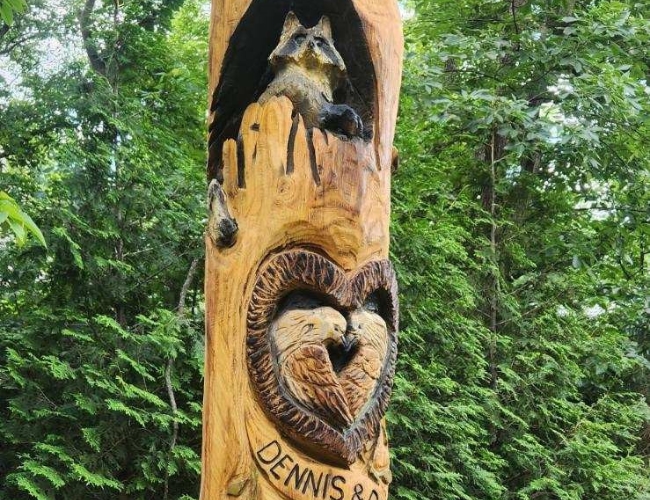
Get the latest local news, tree care tips, special offers, and company updates directly to your inbox! It's easy to subscribe and there's no spam - we promise.
"*" indicates required fields

